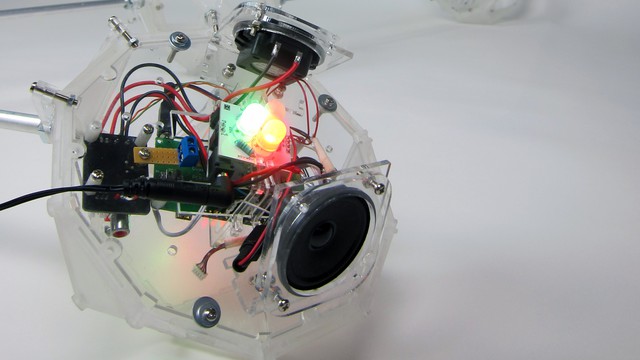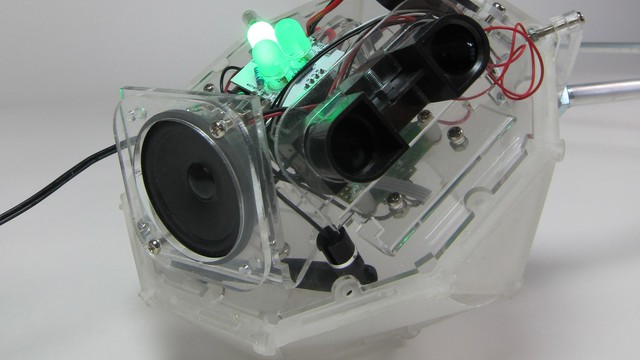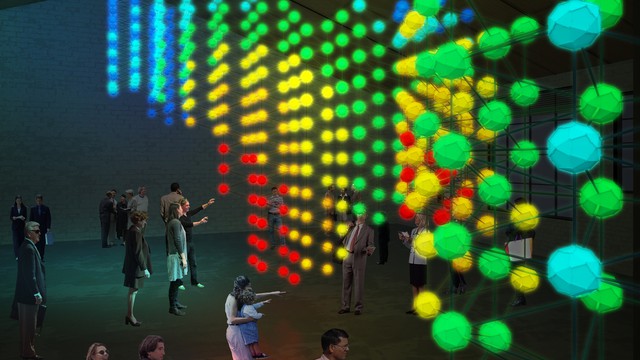Polymedia Pixel 2010, Australia,
Investigating how computer augmented architectural components can catalyse inter-building communication





The Polymedia Pixel project is a research project towards the development and application of a computer integrated architectural material and its evaluation through designed and curated building information content. The prototype functions as an investigation of the potential for computer-augmented architectural materials, to catalyse responsive and interactive communication between buildings in a precinct that relates to resource utilisation information. Its principle aim is to allow buildings to collect, analyse and exchange information.
Polymedia Pixel is a computer-augmented architectural material developed by a team of researchers at the University of New South Wales, Sydney and UTS, Sydney, lead by Dr. M. Hank Haeusler. Stepping away from the perception of media façades as merely being a big screen, the conceptual starting point of the project is to redefine the use of computers in architecture and whether computer-augmented architectural materials can define space and catalyse inter-building communication. The Polymedia Pixel aims to be more like a smartphone, when it comes to its sensing and computing power, but in form of an architectural building component. The Polymedia Pixel is an icosidodecahedron-shaped building component, similar to a node in a space frame structure, each of them being interconnected via rods to another element for physical stability. Using engineering principles of space-frame structures the 32 connection points at the pixel allow for more flexibility than conventional systems. The system is based on the fundamental understanding that a pixel is an element, used in groups of other pixels to represent dynamic visual information as a screen. Therefore each Polymedia Pixel includes embedded sensory equipment which functions as an interface to form an active media façade. It consists of a computer-on-module (COM) and various sensing devices such as microphones, speakers, ultrasonic sensors and cameras to name but a few. The Polymedia Pixel enables designers to create versatile media façades capable of integrating with variations of physical shapes and surroundings by using a sentient material to be situated in any imaginary context, enabling the media façade to sense and process data and information, and to output visual or audio messages accordingly. Such technologies bring the built environment closer to achievements in robotics and support ubiquitous city principles by working as data collector and distributor, which is essential for realising Ubiquitous City concepts.
http://www.sense-aware.com/2009/10/interactive-polymedia-pixel-media.html
Details
Building or project owner : Prototype
Project artist/ concept/ design/ planning : University of New South Wales (Dr. M. Hank Haeusler); University of Technology Sydney (Prof. Kirsty Beilharz, Dr. Sam Fergusson, Dr. Alen Alempijevic)
Light design : University of New South Wales (Dr. M. Hank Haeusler)
Light hardware (LED hardware) : University of New South Wales (Dr. M. Hank Haeusler); University of Technology Sydney (Prof. Kirsty Beilharz, Dr. Sam Fergusson, Dr. Alen Alempijevic)
Descriptions
Facade type and geometry (structure) : icosidodecahedron-shaped building component with 32 connection points
Kind of light creation : Using BlinkM max LEDs (445,000 mcd) the Polymedia Pixel can communicate data via an I2C protocol from the COM (computer-on-module) to the the LEDs and other sensors in located within the pixel.
Resolution and transmitting behaviour : The distance from Pixel to Pixel can vary between 20-90 cm.
Urban situation : Able to be attached on nearly all building façades as retrofitting through its great flexibility.
Description of showreel : University of New South Wales (Dr. M. Hank Haeusler); University of Technology Sydney (Prof. Kirsty Beilharz, Dr. Sam Fergusson, Dr. Alen Alempijevic)